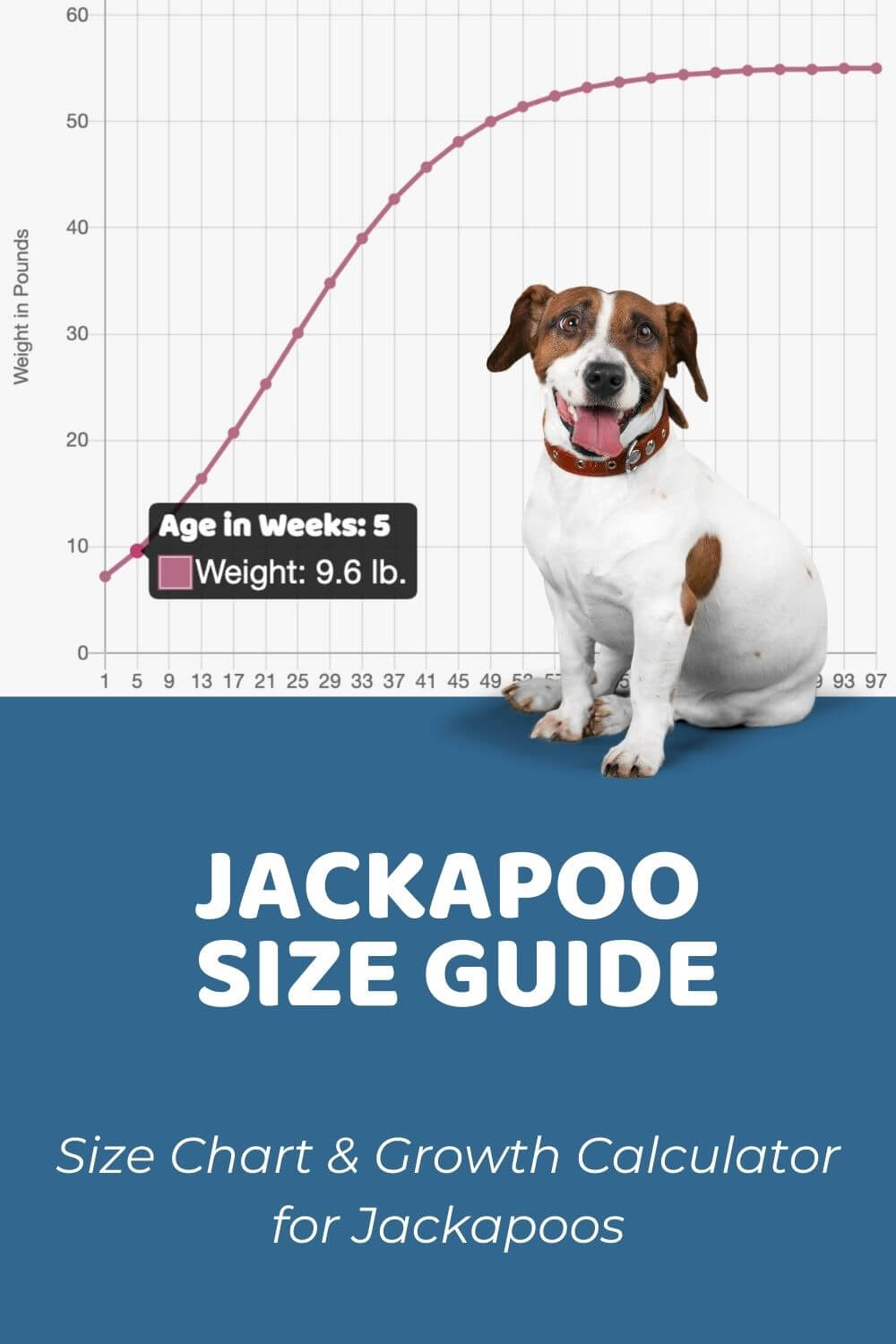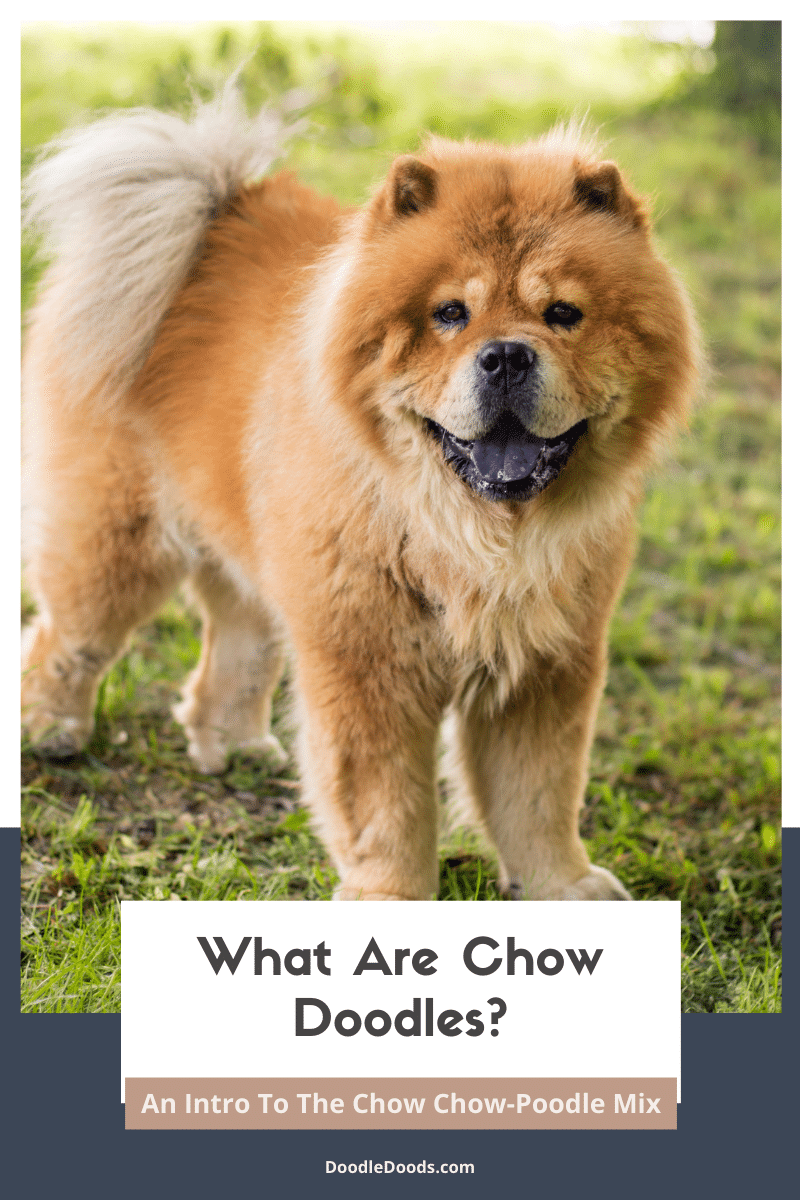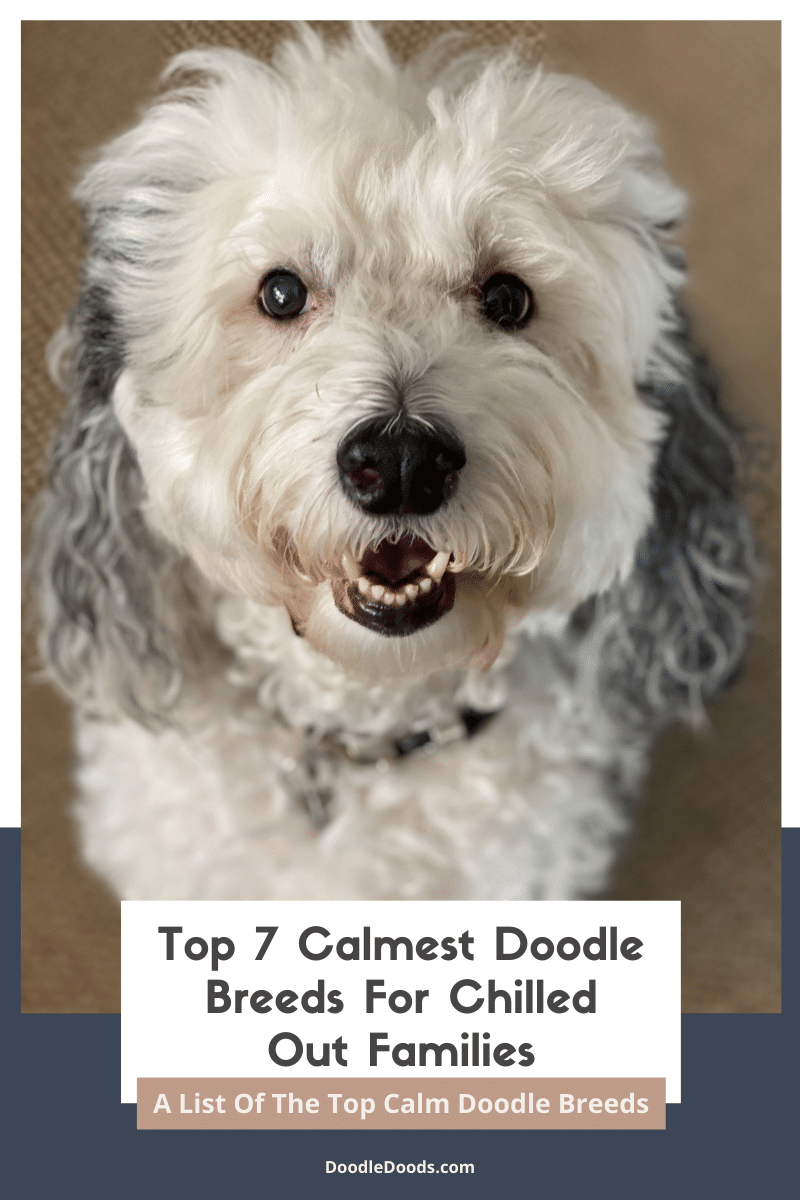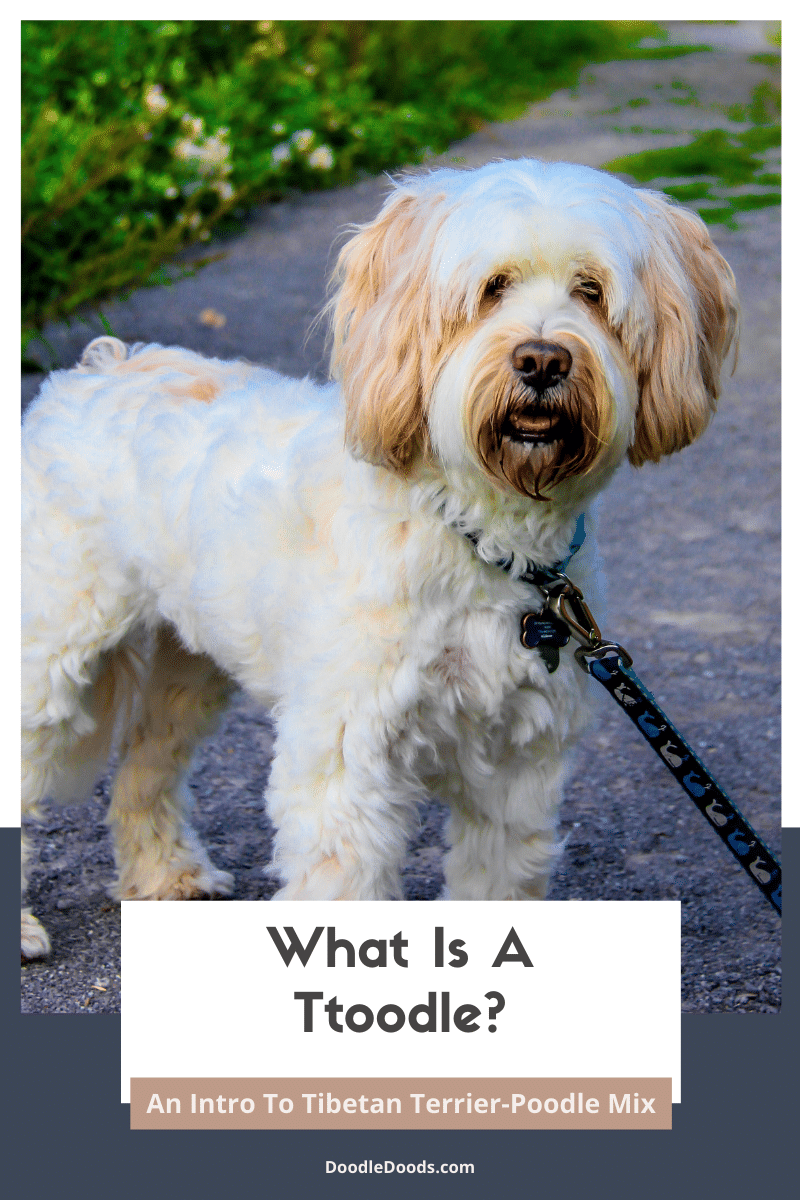Otherwise known as the Jackadoodle or by (the unfortunate moniker) Poojack, this wagtastic combination of a Jack Russell Terrier and a (usually Miniature or Toy) Poodle is great for those looking for a smart, loving, cheeky chappy of a pet. Affectionate and lively, the small-sized Jackapoo is enough to charm the hardest of hearts. If you’re thinking of welcoming one of these delightful dogs into your home, here you can find out what you could be in for when you do.
Learn How to Care for Your Doodle Puppy!

Perfect for first-time Doodle parents, get ALL your questions answered, including questions new Doodle parents don’t even think to ask.
Plus, get $700 worth of Bonus Materials for FREE, including:- Doodle Parenthood Community and Support Group ($190 value)
- Doodle Puppy Growth Tracker ($20 value)
- EMERGENCY Cheatsheet: When To Call The Vet Immediately ($50 value)
- HELP! Button ($145 value)
- And SO MUCH MORE!
What Exactly is a Jackapoo?
As mentioned above, Jackapoos combine the very best of two exceedingly popular dog breeds. While there are no specific standards in place for Jackapoos in terms of physical appearance or temperament, we can learn more about these relatively new types of Doodle by looking at their parent pups.
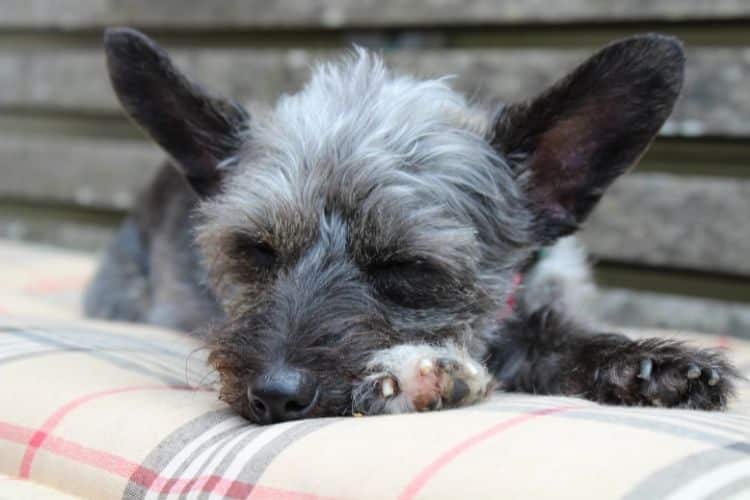
The energetic, playful Jack Russell Terrier was bred around 200 years ago in England to hunt foxes. Also known as the Parson Russell Terrier for the person who first produced them, these dogs are bold, athletic, and come with an intense desire to hunt. These days Jack Russells make great pets for experienced dog owners who can keep them in check.
The fluffy, fabulous Poodle was first imagined as a water retrieving dog. Despite their strong associations with France, they derive from German. Poodles are athletic, loyal, and considered to be one of the most intelligent dog breeds currently in existence. Today there are three distinct sizes, with the smaller ones making excellent companion animals.
3 Interesting Facts About Jack Russell Terrier-Poodle Mixes
- Jackapoos are high-energy dogs with honed hunting instincts that make them likely to chase smaller animals, including other pets in the same household.
- With their athletic, nimble build and wanderlust potential, these pups are excellent escape artists. They will happily dig under a fence or simply jump right over it.
- Jackapoo’s working dog parents are both super bright, meaning your pup could potentially learn just about any trick you’d like to teach them with the right motivation.
Jackapoo Physical Appearance
With two quite different dogs in the mix, it’s only natural that there would be a fair bit of variability in the Jackapoo’s physical appearance. Depending on their generation (see below for details on this), they may have inherited equal amounts of their genes from both breeds, or there might be more Poodle in there.
Either way, Jackapoos are on the smaller side, with short-to-mid-length hair that could be straight, wavy, or curly. These dogs tend to be white, black, brown, tan, gray, blue, or an interesting mix of two more of those colors. Their noses, though, are always black, and their eyes are always brown.
Jackapoo Size
One concern you might have, especially if you live in an apartment or otherwise have limited house space, is how big a Jackapoo might get. We have mentioned a couple of times that they are small – but what does that mean in real terms?
Unlike other Doodles, Jackapoos haven’t explicitly been divided up into different size categories. Therefore you will, at present, only really hear of Standard Jackapoos. These pups weigh somewhere between 13 to 26 pounds and are around 10 to 16 inches in height to the shoulder. Obviously, dogs with Miniature Poodles in the mix will be on the larger end of the scale, and those with a Toy Poodle parent on the smaller side.
Jackapoos reach their mature size between 7.5 and 13 months, with the smaller dogs getting their first. For more details on how you might expect your pup to grow and how to predict their potential adult size, check out our dedicated article on Jackapoo size and growth rates.
Jackapoo Personality & Temperament
Again, much of what we know about Jackapoos is based on guesswork about how the two parent breeds might combine. From their Jack Russell side, they will inherit tons and tons of energy, a clever, affectionate nature, and a little bit of a stubborn streak. Their Poodle side makes them loving and loyal pups, great companions as well as family dogs, and the propensity to sometimes act like little velcro pooches with those they love most.
Jackapoos aren’t predisposed to aggression. They don’t inherit such tendencies from either breed line. However, their highly intelligent nature can mean that they get easily bored. The issue with this is that when such dogs have nothing to keep them occupied, they can start displaying negative behaviors. These include barking, chewing, digging, and even biting. For this reason, these dogs should not be left home alone for long periods of the day.
Take advantage of the Jackapoo’s brains and agility by training them to do as many different things as you can. You might even look into canine sports to help keep these little guys fit, healthy, and having as much fun as possible. This is also a great way to get them spending time around other dogs and expand their socialization. Exposing your pet to as many new people, pets, and experiences as possible teaches them to be calmer.
Jackapoo Variations & Generations
While size variations of the Jackapoo aren’t really a thing right now, you may well hear about different generations of these dogs. Their generation (and the resultant genetic mix) will have an impact on how their look, their temperament, their coat type, and more – so it’s useful to have a clear understanding of precisely what the terms mean.
Basically, Doodles are divided into F numbers based on which dogs are used to create the puppies. The ‘F’ stands for filial, which really is another word for crossbred offspring, and the number and/or letter following tells you which generation the dog belongs to, as follows:
| 1st Parent | 2nd Parent | % Jack Russell Terrier* | % Poodle* | |
| F1 Jackapoo (first-generation) | Jack Russell Terrier | Poodle | 50% | 50% |
| F1B Jackapoo (first-generation backcross) | F1 Jackapoo | Poodle | 25% | 75% |
| F1BB Jackapoo (first-generation backcross backcross) | F1B Jackapoo | Poodle | 12.5% | 87.5% |
| F2 Jackapoo (second-generation) | F1 Jackapoo | F1 Jackapoo | 50% | 50% |
| F2B Jackapoo (second-generation backcross) | F1 Jackapoo | F1B Jackapoo | 37.5% | 62.5% |
| F2B Jackapoo (alternate cross) | F2 Jackapoo | Poodle | 25% | 75% |
| F3 / Multigen Jackapoo | F1B Jackapoo or higher | F1B Jackapoo or higher | Varies | Varies |

Creating successive generations of hybrid dogs helps the breeder to have more control over the puppies’ traits. They are likely to have a better idea of what a dog from a higher generation might be like compared to a first-generation one. This is important when breeding for certain features, such as a “hypoallergenic” coat.
Jackapoo Health
All dogs have the potential for certain kinds of health problems. Just as with people, this is to do with an interplay of genetics and environment. With regards to genetics, hybrid vigor, a feature of mixed breed dogs, makes Jackapoos more likely to be healthier than both their pedigree ancestors. Their genes are more varied, and any hereditary conditions that might be passed down will usually only be on one side.
As smaller dogs, Jackapoos also have a longer life expectancy than their larger cousins. This is because bigger dogs age faster than little ones. So it’s likely your Jackapoo will live around 12 to 15 years if they receive the right kind of care and attention (the environment side of the equation).
However, just because crossbreeds have less chance of inheriting certain diseases, this sadly doesn’t mean they are completely immune from all illnesses. Like many small dogs, they can be prone to dental issues, so you need to factor oral hygiene into your cleaning and grooming routine. Their Poodle genes also place them at higher risk of skin sensitives and irritation as well as food intolerances, so take care you are feeding your pup the right kinds of food.
Your Jackpoo could also suffer from the hormone issue Addison’s Disease, the bleeding disorder Von Willebrand’s Disease, and patellar luxation, where the knee joint can slide in and out of place. They could also have issues with canine epilepsy, cataracts, and hypothyroidism. That’s why you need to ensure that you are regularly taking your pet for checkups with the vet. The early any of these is discovered, the better the potential outcome for your pup.
Jackapoo Exercise & Training
Like all good Doods, the Jackapoo’s training potential is through the roof. Not only do they benefit from Poodle smarts, but Jack Russells are pretty clever fellas too. However, and it really is a big however, Jackapoos can also have a little bit of a stubborn streak. So if what you are trying to teach them is not holding their interest, it can be almost impossible to motivate them to do it – especially if you’re a relative novice at canine training.
With a little bit of experience or guidance via Baxter and Bella’s Online Puppy School, though, this could be the start of a very beautiful friendship indeed. With confidence, consistency, and using positive reinforcement techniques, these pups can pick up new commands and tricks with absolute ease. In fact, Jackapoos thrive when they have something to do, especially if it not only keeps them mentally active but physically active too.
Need help with training?

Use our discount code: DOODLEDOODS at checkout for an instant 25% off of BAXTER & BELLA, The Online Puppy School – an incredible value on their lifetime membership!
Learn More About BAXTER & BELLAAs we’ve touched on a couple of times already, Jackapoos are extremely high-energy dogs. For that reason, they will need a lot of exercise – especially if you are living in a place where they don’t have easy access to a large yard to play in. They will need to get out and about for at least an hour a day. However, their wanderlust potential means that you should keep them on the leash at all times unless you are fully confident they can’t run off. Remember, the Terrier nature is to chase down small animals.
If you do have a yard or somewhere your Jackapoo can enjoy their games and toys, then the more’s, the better. Just keep in mind that these dogs are excellent escape artists. Not only do they excel at digging holes, and very quickly indeed, but they can also jump up to five feet at will – so any hedge or fence around your property is going to need to be higher than that to keep them nicely contained.
Jackapoo Coat & Grooming
Your Jackapoo, especially if they have a 50-50 gene split, could easily end up with either the much-in-demand low-shed Poodle coat or one of THREE Jack Russell coat types: smooth, rough, or broken.
- The Poodle single-layered hair coat probably doesn’t need much of an explanation. These coats tend to be very curly, can get quite long, and is the whole reason why Doodles were created in the first place (as they are thought to be more hypoallergenic than other breeds).
- The Jack Russell smooth coat is double-layered, short, and very sleek. There is no excess hair around the face or any other parts of the body. It all lies in one direction and is by far the easiest of the coat types to care for.
- The Jack Russell rough coat is also double-layered but slightly longer and much more coarse than the smooth coat. The fur is wiry but straight and grows in all different directions for a more textured look. Obviously, it needs a little more grooming and maybe even occasional trimming.
- The Jack Russell broken coat, again double-layered, is a combination of the two above. Patches of both smooth and rough fur cover the dog’s body for a truly unique look. This coat is also wiry and can be very long in patches. You will likely need to trim these dogs around the face, legs, and rear end.
If your Jackapoo inherits one of the Jack Russell coats, they are likely to shed a little more than if they get a Poodle one. However, the Poodle coat is by far the more difficult to maintain out of all the others. This is because the few hairs that do shed can end up tangled in the healthy coat, developing into knots and then matting if you aren’t brushing your pup on a regular basis.
Of course, your Jackapoo could also end up with a coat that sits somewhere in the middle of all of the others. Perhaps a single-layered, longer wavy but coarse coat. This one should also be reasonably easy to care for as long as you are willing to give your pet a thorough brushing every few days. This hair type can also get long quickly, so you might need to head to the groomers every few weeks.
On the other hand, if you prefer to care for your pup’s coat at home, take a look at our articles on grooming that cover everything from the best brush types to use for different coats to how to use an electric shaver on your dog without making them look a total state. You can find them all right here.
Where Can You Get Jackapoo Puppies?
If you’ve reached this part of the article and are still determined to adopt a Jackapoo, then you are going to need to know where to get one. These days you can hardly navigate your way around the web without stumbling across an advert for puppies or three. Be cautious, though; not all breeders are of the same caliber. There are a lot of tricksters out there and even more facilities that focus on profit above all else. Here are the red flags to run from.
On the other hand, if you think you have sourced a responsible breeder, make sure you ask about the health of the parent dogs and whether the facility includes a health guarantee with purchase. These are two indicators that you are picking up a puppy that will be in the very best of health.
However, they are not going to be cheap. This kind of high-level breeding costs far more, and these expenses are passed on to the purchaser. Jackapoos are more affordable than other Doods, but you will still be looking somewhere between $250 and $800. It’s definitely worth it, though, as paying a little more here is likely to save you $$$ in vet bills down the line.
Take a look at our breeder’s directory to find a place near you.
Jackapoo Frequently Asked Questions:
Is a Jackapoo a good family dog?
Jackapoos make truly wonderful family dogs. These pups adore kids, and kids are liable to love them right back. Especially when they are happily running around and playing games together. Not only that, Jackapoos can be real cuddle monkeys, too, so curling up on the couch is another way to connect. Just take care you carefully supervise your young ones around your dog.
Do Jackapoos shed?
Jackapoos do indeed have the potential to shed, as do all dogs. The amount this occurs will depend very much on the type of coat that they inherit. With the Poodle curly coat, they will hardly shed at all. However, with the Jack Russell double fur coat, you might notice a little more hair about the place, especially with the changing of the seasons. This helps your dog to better regulate their temperature to suit their surroundings.
Is a Jackapoo a small or medium dog?
Jackapoos are usually on the small side, although with a Miniature Poodle and a slightly larger Jack Russell, you could well end up with a dog that’s on the smaller side of medium. Jackapoos usually weigh between 13 to 26 pounds and stand at 10 to 16 inches to the shoulder. Your breeder can help you determine exactly what size your puppy could grow to based on the parent dogs.
Jackapoos are darling dogs, just like both their parent breeds. They are bright, lively little ones with meltingly cute, alert eyes, feisty temperaments, and super smart natures. These dogs make perfect pets for dog-experienced individuals and active families who are looking to take Fido out on all kinds of outdoor adventures. Just take care as they could be even more eager to get out and about and explore than you are. You’ll need to keep a close eye on these energetic hounds. However, the effort will be repaid in full with all the fun you will have with your beautiful Jackapoo.


